Eric Fischl Explores U.S. Dystopia Through a Sag Harbor Halloween Parade
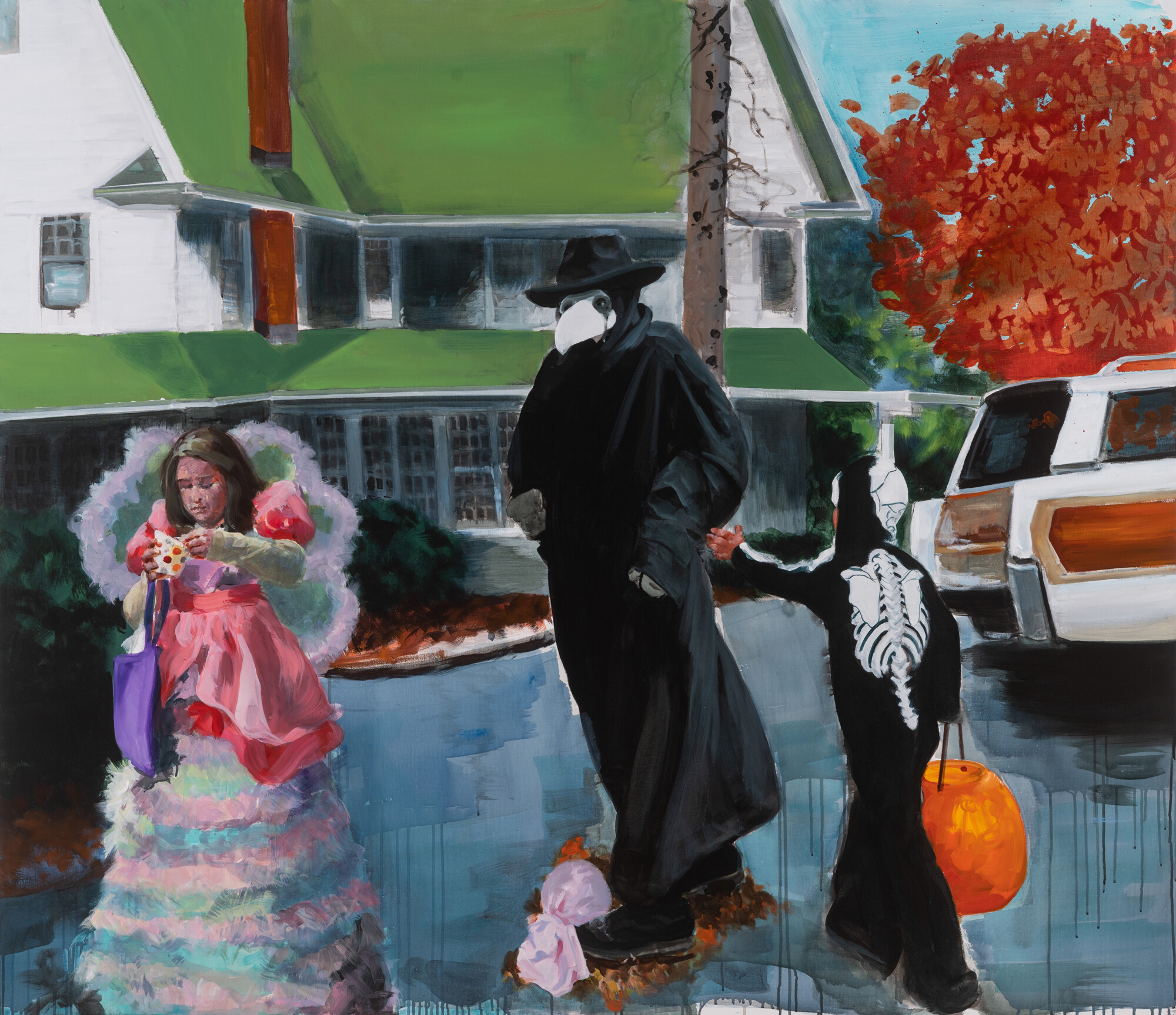
New York City art gallery Skarstedt, which also has an East Hampton location (66 Newtown Lane), is about to conclude a show of exceptional paintings by world-renowned North Haven artist Eric Fischl, and they’re definitely worth a look before the pieces come down off the gallery’s walls.
The show, lengthily titled Towards the End of an Astonishing Beauty: An Elegy to Sag Harbor, and Thus America features seven new paintings by the artist, all set within or inspired by Sag Harbor’s annual Ragamuffin Parade Halloween celebration. And those who know and understand Fischl’s work will quickly find that these new works continue his incisive and often humorous or cynical exploration of human beings and our relationships with ourselves, one another and the world we inhabit.
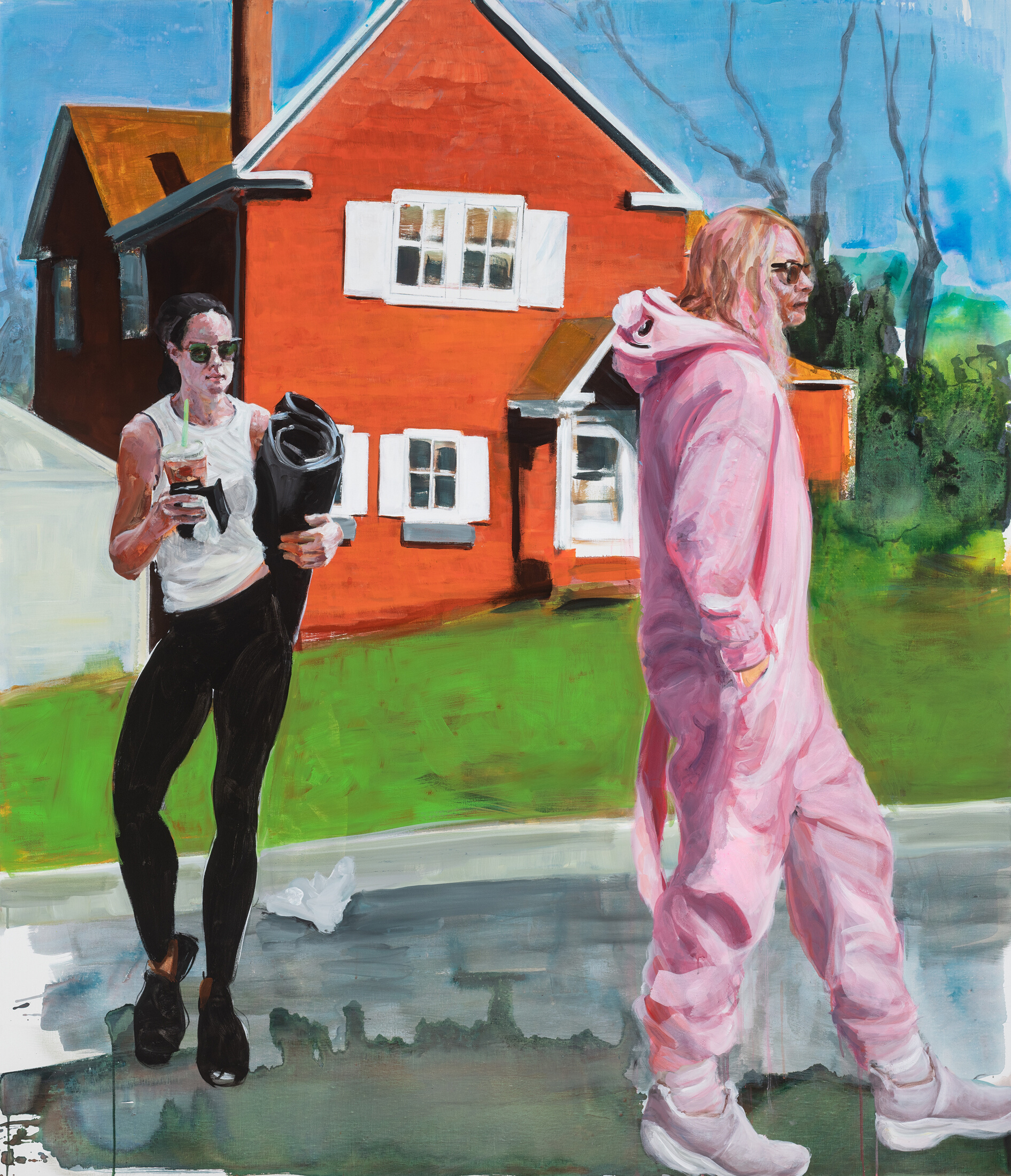
Skarsted, which opened the exhibition on September 14 and will close it this Saturday, October 29, explains that the artist uses the Ragamuffin Parade to set the scene for “explorations into themes of exhaustion, isolation, disappointment, and passivity,” pointing out that “since the 1980s, Fischl has produced narratives that speak to the façade of happiness latent within the middle-class American dream and the masks one must wear to survive in contemporary society.”
With the Halloween theme, these masks are quite literal as they take center stage in the works. Fischl makes clear decisions about the costumes he chooses to represent, including a Middle Ages plague physician with black robes, wide-brimmed hat and ominous, bone white beak like a predatory bird, which was the best PPE of the day as the Black Death wormed its way through Europe, leaving pain, misery and sorrow in its wake.
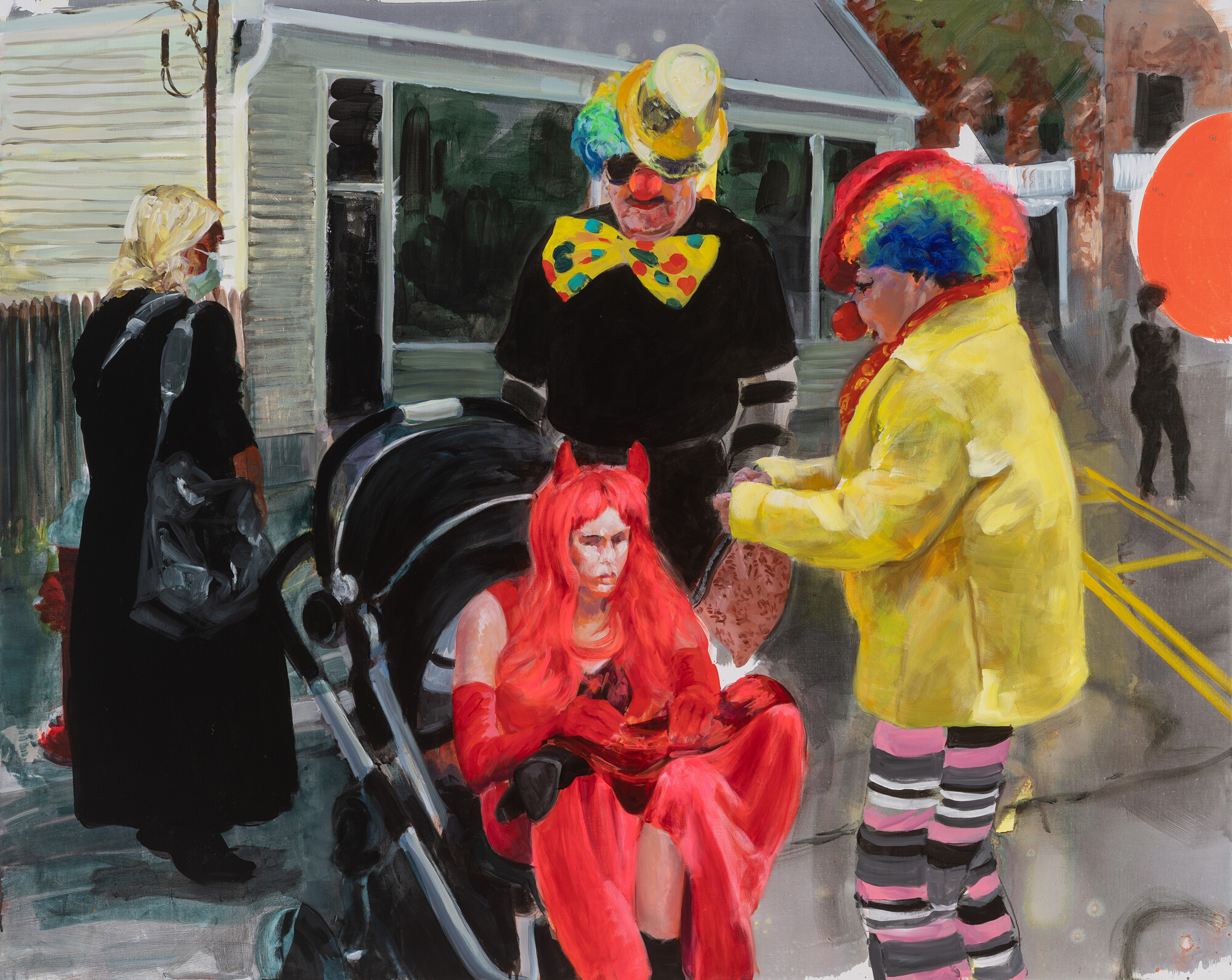
2022, acrylic on linen, 54 x 68 inches, 137.2 x 172.7 cmCourtesy Skarstedt
It’s no mistake that his choice brings our most recent pandemic and all its travails and losses to mind.
The parade represents the trappings of small town life in America, but Fischl, and his viewers, by extension, see it through a distorted, dystopian lens. The artist’s process includes using photographic references, which he will typically shoot and then put together in order to create a whole picture collaged from collected fragments that catch his interest.
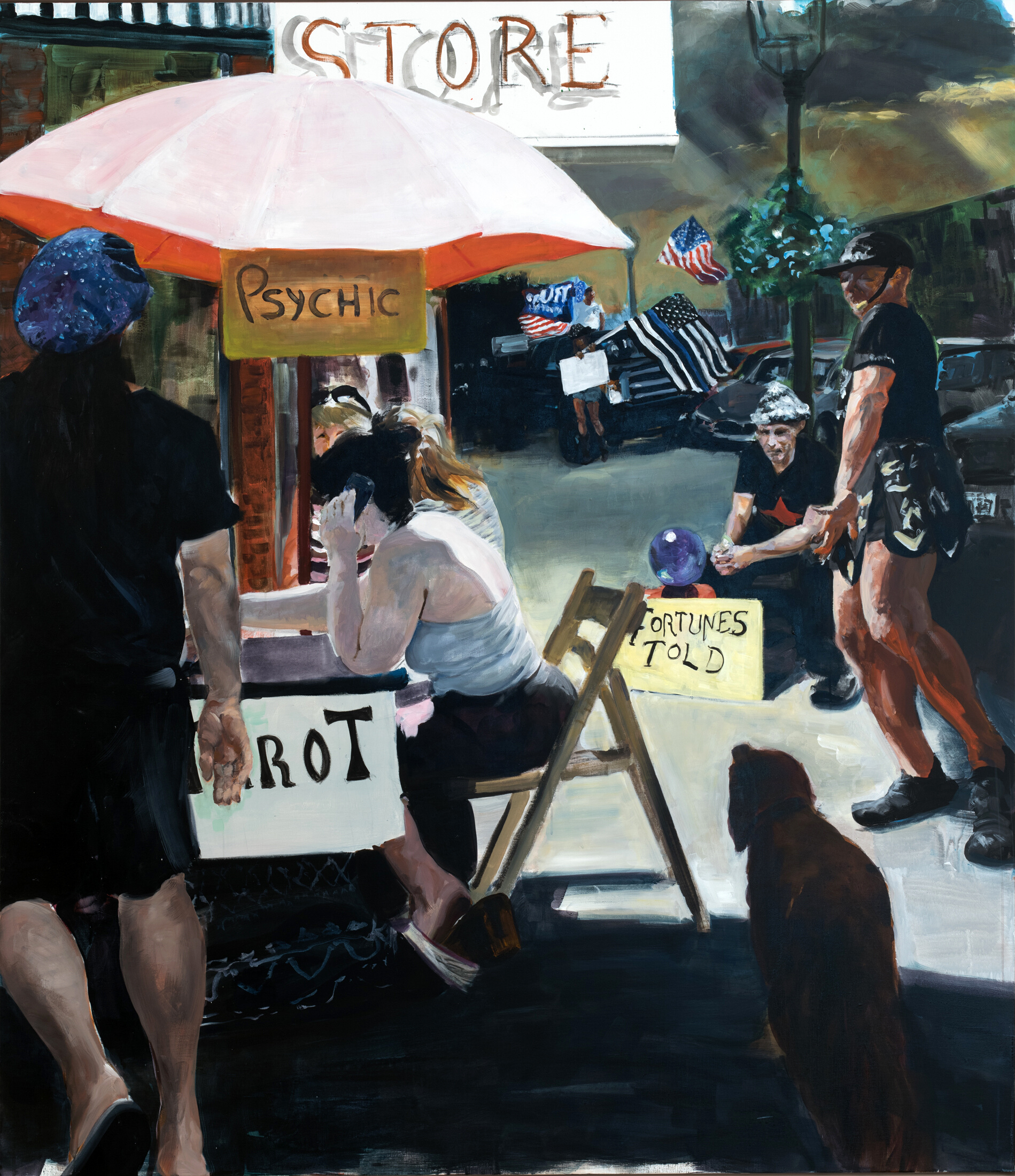
“Fischl sees these themes quickly disintegrating in a divided world ravaged by global pandemics, political insurrections, and unjust wars,” the gallery says, describing the works as providing more questions than answers as the absurdity of it all takes shape.
Skarsted offers some thoughts on various pieces:
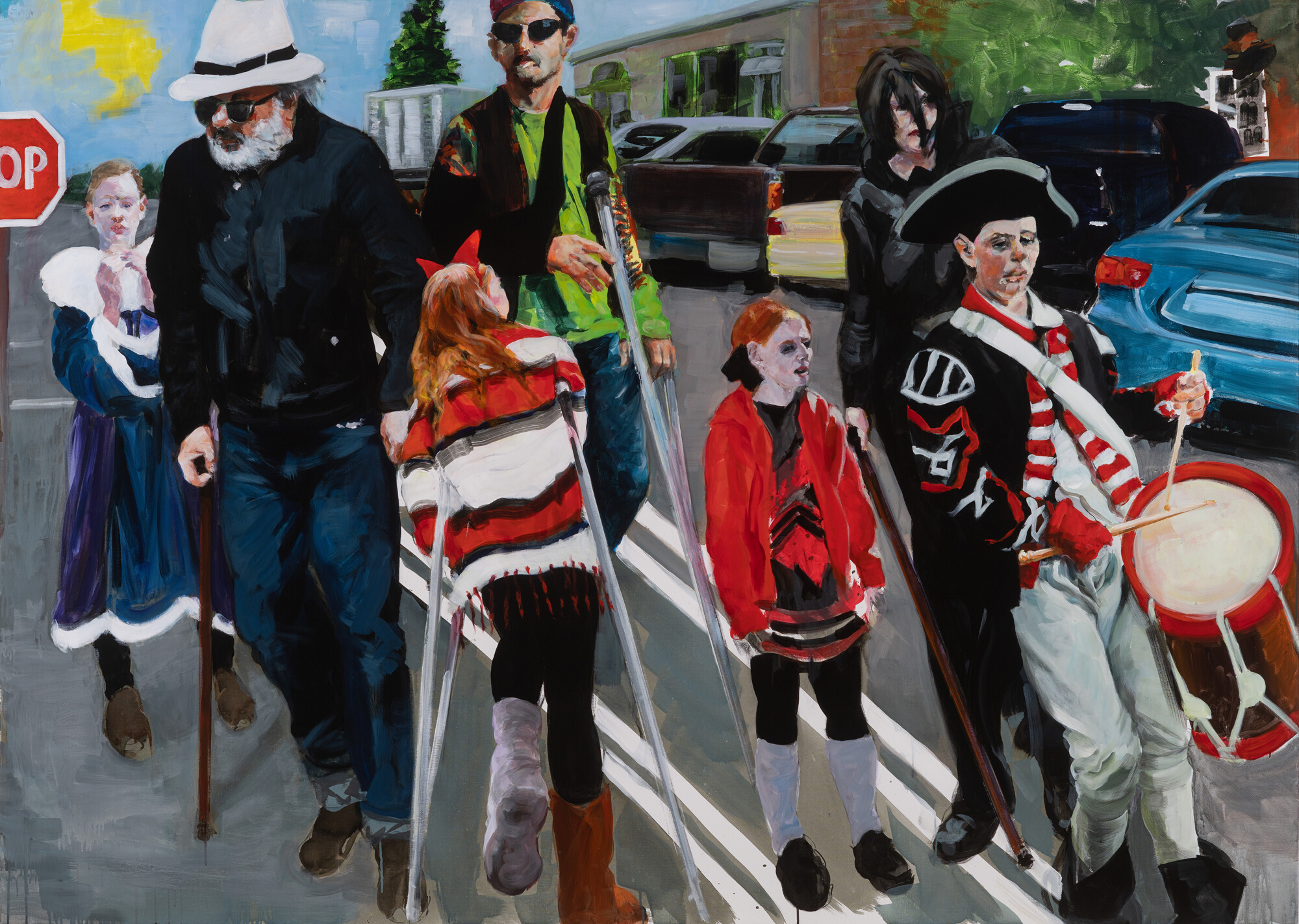
Exploring Works by Eric Fischl
In ‘The Parade Returns,” Skarsted says, “Sag Harbor residents of varying ages limp along the parade route, averting their gazes from those around them as they amble in all directions, bound to bump into one another. The scene suggests a moment of delight and play coming to an end as the figures return home exhausted and battered, as if returning from war.” And they have the crutches, canes and casts to prove it.
Along with the aforementioned plague doctor in “Please Wait, Sir” Skarsted points to the “oblivious young girl eating ice cream,” and her brother trying to stop the symbolic plague “while a single tear falls down the mask, hinting at preemptive remorse for what is to come.”
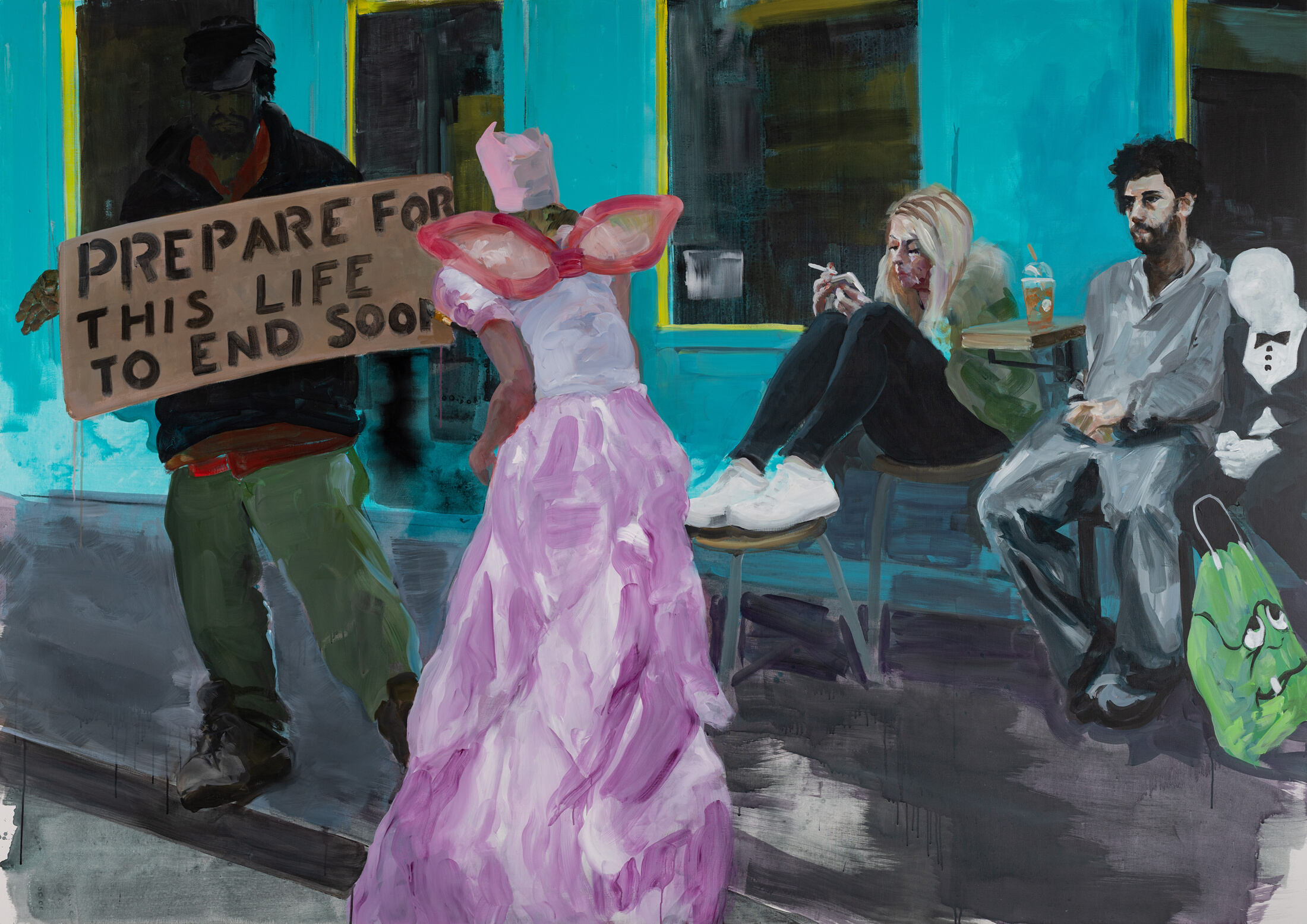
In “Sign of the Times,” the gallery points to the figures who simply “stare at their phones or off into the distance, ignoring the man wielding a sign bearing a fatalistic message of doom and destruction.”
The paintings in Towards the End of an Astonishing Beauty once again demonstrate why so many continue to be spellbound by Fischl’s unique vision, and while he lives on the East End, the connections are not always as obvious as they are in this particular series of paintings. And that makes them well worth the trip to NYC, if you can make it by Saturday.
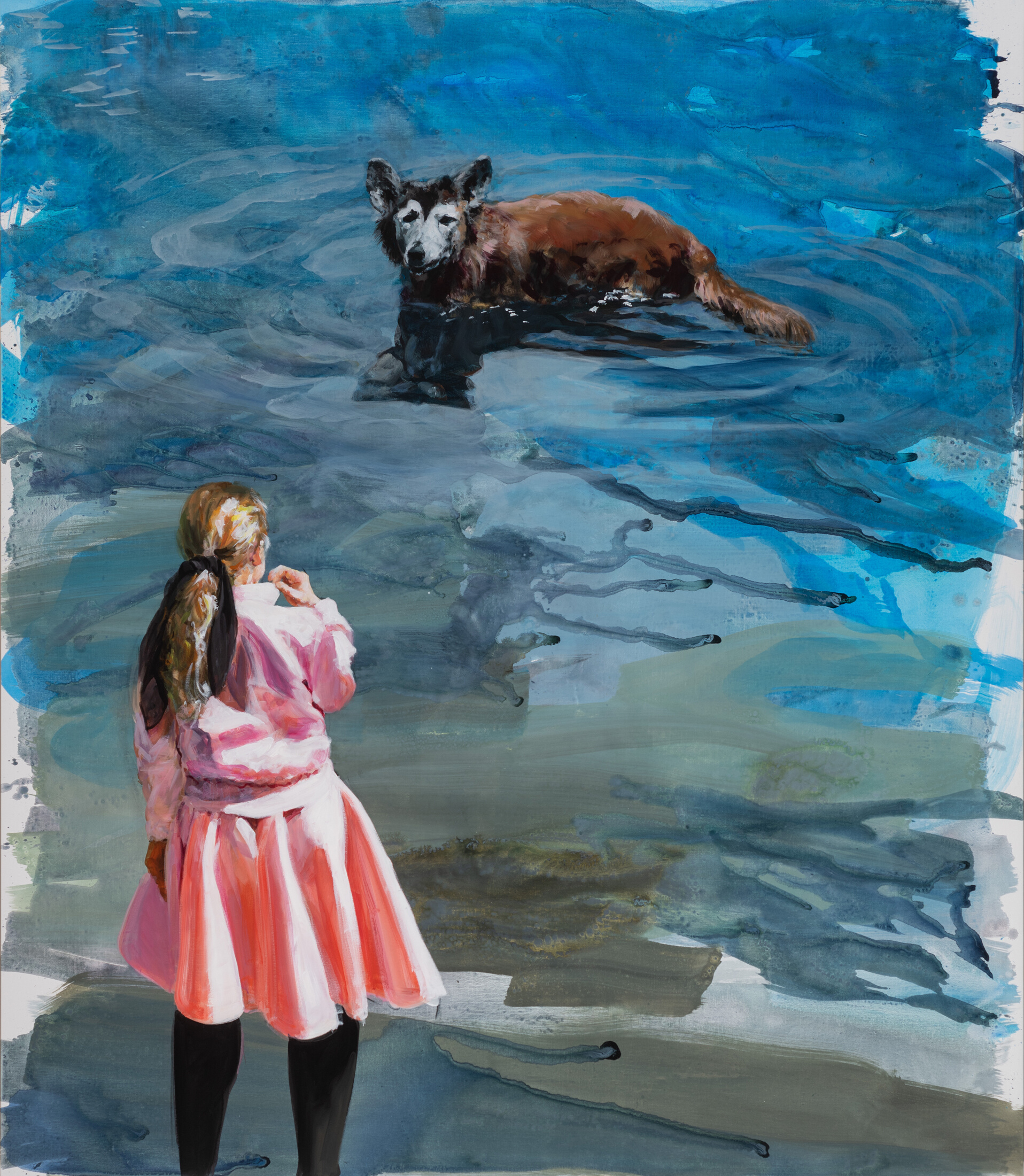
Towards the End of an Astonishing Beauty: An Elegy to Sag Harbor, and Thus America is on view now at Skarstedt in Manhattan (20 East 79th Street). Call 212-737-2060 or visit skarstedt.com.



